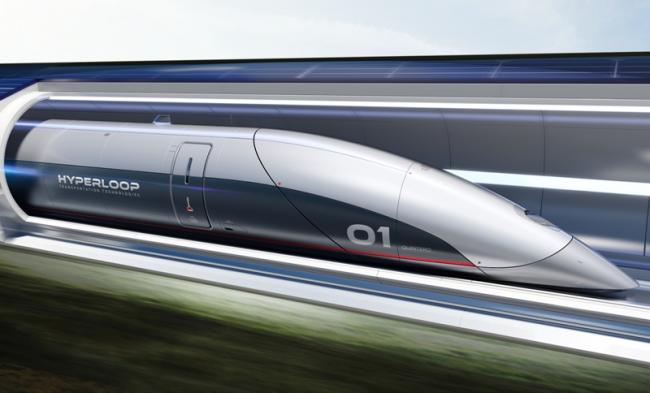
Hyperloop gains traction worldwide
Transportation pioneers in the United States and India have converged on a sustainable, futuristic solution -- the hyperloop, a high-speed pod in a vacuum tube travelling at airplane speed. Yanqi Xu and Brooke Vaughan from USA and Souryaprokas Bhaduri and Maiyankini Bose from India report
On a sunny Thursday in April, Jenna Remack packed up her 2011 Kia Sorrento and strapped her 20-month-old son, Sawyer, into his car seat. Sawyer babbled in the back seat as the two set off on their six-hour drive from Independence, Missouri, to Springfield, Illinois.
After moving to the Kansas City metro area about four years ago, Jenna and her husband Bobby planned to visit their family in Illinois four times a year. But the distance makes such frequent visits impossible. With two jobs, a toddler, and a baby on the way, the couple can’t easily manage 12 hours of commuting -- although they really want their relatives to be involved in their children’s lives.
Travel time is a global concern for the modern commuter, as are pollution, congestion and cost. Realizing this, transportation pioneers in the United States and India have converged on a sustainable, futuristic solution -- the hyperloop, a high-speed pod in a vacuum tube.
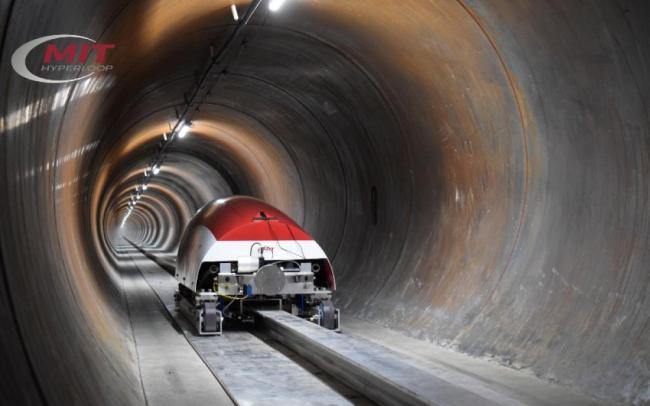 MIT Hyperloop
MIT Hyperloop
Travelling with minimal friction, hyperloop may go as fast as 700 mph and presents an energy-efficient alternative to traditional modes of transportation. But skeptics doubt the hyperloop will become a reality anytime soon. While plans are further along in India than in the United States, obstacles abound in both countries.
Many commuters hope the skeptics are wrong. Not only would the hyperloop make it easier to work in distant cities, it would help solve nightmarish traffic snarls.
Shasheesh Tiwari, a graphic designer from Bangalore, said it takes an hour and a half to make a mere 18-kilometer trip to his office by rideshare services like Uber.
“Bangalore has grown in an unplanned way at exponential pace in the last decade. Most roads are narrow, leading to traffic congestion in every part of the city,” he said. “It’s a constant and defeating exercise to beat the mounting traffic in the city.”
An old dream in a new age
George Medhurst, an 18th century British inventor and engineer, first envisioned vacuum-pipe transportation. The idea has since been revived by modern entrepreneurs, such as Elon Musk, the founder of SpaceX.
SpaceX is now working to maximize speed in the hyperloop pod, while another company -- Virgin Hyperloop One -- is working to commercialize the hyperloop.
Virgin Hyperloop One built the first full-scale test track in Nevada, setting a record speed of 240 mph in 2017. “We want to get the system at least operational first for testing and certification by the year 2023,” said Dan Katz, the company’s director of global policy.
Virgin Hyperloop One has long been seeking a location for the first real hyperloop system, and asked innovators across the world for route possibilities in its Global Challenge contest in 2016.
The Missouri Department of Transportation responded by submitting its proposal for a Hyperloop One route from St. Louis to Kansas City via Columbia. Tom Blair, St. Louis District Engineer at the Missouri Department of Transportation, spent five hours meeting with the Hyperloop One team in early 2016. “I walked out somewhat of a believer that these individuals might actually create a new mode of transportation,” he said.
Soon the Missouri Hyperloop Coalition was formed, comprising representatives from the transportation department, the St. Louis Regional Chamber of Commerce and other groups.
They envision a system better than the so-called “bullet trains” -- less dependent on weather, quieter, and able to carry both passengers and valuable freight. Hyperloop would travel faster than high-speed rail systems in China, Japan and Germany, and also require less maintenance, said Bill Turpin, CEO of Missouri Innovation Center, a member of the Missouri Hyperloop Coalition.
Although Missouri wasn’t a finalist in the Global Challenge, its coalition has created a public-private partnership that is still working toward a St. Louis-Kansas City hyperloop route that would take about 25 minutes to travel.
In January, the coalition announced it would launch a feasibility study, which is expected to conclude in October.
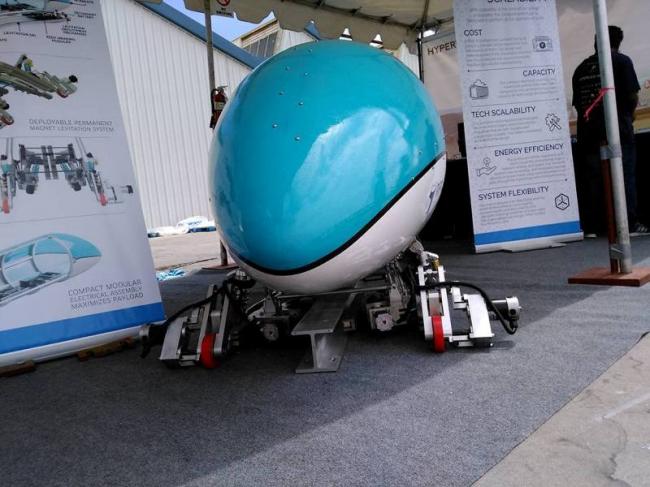 Hyperloop Pod. Image: Hyperloop India
Hyperloop Pod. Image: Hyperloop India
A month later, in India, the winning route from the west coast of Mumbai to Pune announced a feasibility study of its own. (India also has winning routes from Bengaluru to Chennai and Mumbai to Chennai.)
Winner Hyperloop India, a team of students from several Indian colleges, is also working on a second-generation pod for the 2018 SpaceX Pod Competition. The pod is designed to reach 500 kilometers, or about 310 miles per hour, said Vinayak Kamal Ghosh, a member of the business development team of Hyperloop India.
“We are currently working on manufacturing the pod in Bangalore,” he said, adding that they are seeking funds from the government and corporate groups in order to finance the construction and assembly of the pod prototype and facilitate the functioning of the team.
Dubai’s Gulf News reported that India and the United Arab Emirates are the likeliest countries, according to Virgin Hyperloop One’s CEO, to be selected for the first commercially viable hyperloop.
Why Hyperloop?
Enthusiasts consider the hyperloop a great mode of transportation for all ages, from children to senior citizens who can no longer drive.
“They could get on the hyperloop, go to the football game and be back that night, or go to the basketball game or go to the concert,”
Drew Thompson, director of data center solutions at Black & Veatch, the engineering firm conducting the feasibility study.
Technologies like the hyperloop may bring a business model that not only pays for itself through tickets and fares, but also generates revenue -- a business model more akin to airline companies.
“Missouri, for us, is a very exciting project,” Katz said, “because we have the opportunity to look very specifically at how hyperloop can remake what was traditionally just the highway into a transportation corridor of the future.”
Besides creating shortened trips for residents on either side of Missouri, advocates say the hyperloop, when built, would attract people who normally wouldn't travel back and forth -- and perhaps tourism.
In the meantime, they said, it would create construction jobs, increase demand for restaurants and hotels, and hopefully attract more business to Missouri.
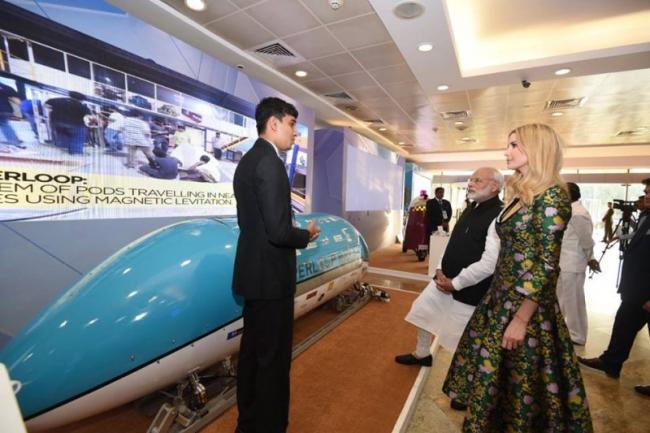 Indian Prime Minister Narendra Modi and White House Advisor Ivanka Trump attending a demo session by Hyperloop India
Indian Prime Minister Narendra Modi and White House Advisor Ivanka Trump attending a demo session by Hyperloop India
Indian officials say the hyperloop would solve many problems for their country as well.
Megacities in the developing country are battling transportation unreliability, congestion and pollution, said Bishwanath Deewanjee, chief engineer at the Kolkata Metro Rail Corporation Ltd., which is now building the East-West Metro Corridor in Kolkata, a city of over 14 millions combing its outskirts.
In the capital city of Delhi, drivers with odd- and even-numbered license plates must alternate days to restrict the number of exhaust-spewing vehicles on the roads.
In the long run, Deewanjee said, transportation systems that emphasize walking, cycling and public transportation would be better than continuing to depend on “the use of private cars, which would in turn lead to more pollution.”
One option being constructed to ease congestion now is East West Metro in Kolkata, which includes an underwater tunnel beneath the Hooghly River, he said, adding this is the first of its kind in India.
Further down the road is the hyperloop.
Will the dream of the hyperloop remain a dream?
But plans in both countries face a big roadblock: Money.
There hasn’t been a cost estimate for Hyperloop One in Missouri. “But it is not going to be cheap,” said Ryan Weber, director of KC Tech Council, a member of the coalition.
The feasibility study will determine the estimate and set a price range for fares, Thompson said. He said the starting point of the study will be the routing (most likely along I-70).
Andrew Smith, vice president of the St. Louis Regional Chamber of Commerce, said the feasibility study should answer “everything from the route alignment along I-70 to station locations ... right of way issues, environmental and economic impact … regulations and then, ultimately, business models.”
Whatever the final estimate, paying for the hyperloop won’t be easy. Funding for transportation in Missouri relies solely on the $0.17-per-gallon gas tax, which hasn’t risen in decades.
All this means Missouri will have to rely on private industry to move ahead on the hyperloop, which everyone agrees would be a multi-billion-dollar investment.
Katz said the Indian hyperloop proposal also comes down to partnership. “We have a number of partners coming together, including the government,” a leading port operator and financial backers, Katz said.
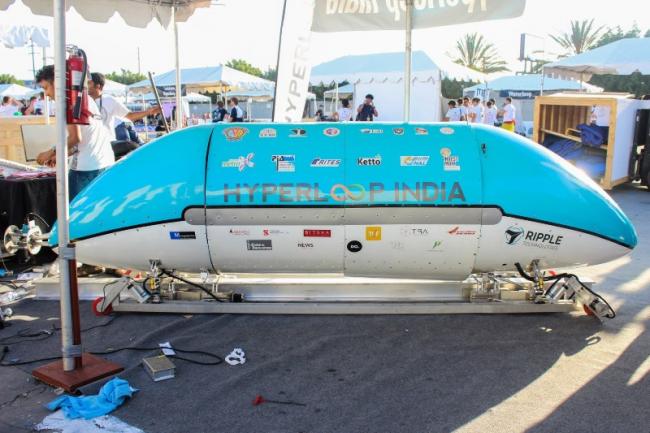 Hyperloop India, a multi-disciplinary think tank founded in 2015 consisting of students from BITS-Pilani, IIM-A, Indian School of Business, Symbiosis International (Deemed University), RV College of Engineering and NID, have built a successful functional Hyperloop Pod Prototype called the OrcaPod for the SpaceX Pod Competition II - which is held at their headquarters in Hawthorne, California. Hyperloop India has been recognized by Niti Aayog as the top 5 innovations. They demonstrated their work before Prime Minister Narendra Modi and Advisor to the US President, Ivanka Trump, at the Global Entrepreneurship Summit 2017 as well.
Hyperloop India, a multi-disciplinary think tank founded in 2015 consisting of students from BITS-Pilani, IIM-A, Indian School of Business, Symbiosis International (Deemed University), RV College of Engineering and NID, have built a successful functional Hyperloop Pod Prototype called the OrcaPod for the SpaceX Pod Competition II - which is held at their headquarters in Hawthorne, California. Hyperloop India has been recognized by Niti Aayog as the top 5 innovations. They demonstrated their work before Prime Minister Narendra Modi and Advisor to the US President, Ivanka Trump, at the Global Entrepreneurship Summit 2017 as well.
Maharashtra Chief Minister Devendra Fadnavis touted the benefits of Virgin Hyperloop One, and Indian Prime Minister Narendra Modi witnessed the signing of agreement for the Mumbai-Pune route.
Across the world, hyperloop proponents remain optimistic.
What is a hyperloop?
- It is a high-speed pod travelling at airplane speed.
- It is designed to be the fastest ground transportation at up to 700 mph.
- It would shorten a four-hour-drive from Kansas City to St. Louis to a 25-minute-ride.
- The hyperloop name was coined by Tesla and SpaceX founder Elon Musk, who later open-sourced the concept.
- Missouri Hyperloop Coalition is a public-private partnership formed to develop a hyperloop route linking Kansas City and St. Louis.
Kolkata builds underwater tunnel to expand its metro network
While Hyperloop is still at its conceptualization stage, India is trying to expand its metro network in different cities in the past years.
Kolkata, which got India’s first underground metro in 1984, is one such city which like any other Indian urban centre is bursting to the seams owing to is population pressure and transportation bottlenecks.
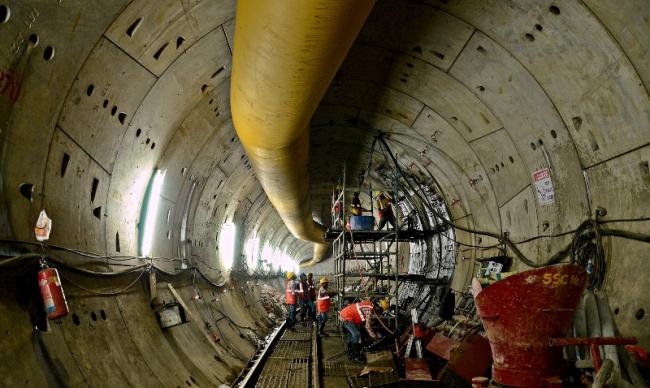 Kolkata building Metro tunnel under river Hoogly. Image: Avishek Mitra
Kolkata building Metro tunnel under river Hoogly. Image: Avishek Mitra
But there's light, at the end of the tunnel, it seems. And these, 'tunnels' are at work now as a part of its East-West Metro Corridor which attempts to solve a major part of the transportation problem of the city.
The East-West metro corridor, which includes India’s first underwater tunnel beneath the Hooghly River, stretches from Howrah Maidan in the east to IT hub Salt Lake Sector V in the west covering a distance of 16.6 km.
This would be a big step in solving problems related to transportation in this part of the country, reckons chief (civil) engineer of the project, Bishwanath Deewanjee.
See, considering Kolkata as a mega-city in a developing country, it has got all kinds of transportation problems, ranging from overpopulation, lack of safety, lack of reliability, lack of proper passenger information among others. It would solve the transportation problems I believe. This corridor would connect two major railway terminals-Howrah and Sealdah. It would connect Esplanade where three metros are converging- East- West, North-South and the Joka-BBD Bag corridor.
-Bishwanath Deewanjee, chief (civil) engineer of East-West metro corridor
“There is a big bus and tram joint in Esplanade which is connecting the central business district of Kolkata and at the same time, it is also connecting the Salt Lake and the IT sector. So, if you connect all these fringes together, I think it is going to be a big solution to the transportation problem in Kolkata," he added.
Support Our Journalism
We cannot do without you.. your contribution supports unbiased journalism
IBNS is not driven by any ism- not wokeism, not racism, not skewed secularism, not hyper right-wing or left liberal ideals, nor by any hardline religious beliefs or hyper nationalism. We want to serve you good old objective news, as they are. We do not judge or preach. We let people decide for themselves. We only try to present factual and well-sourced news.







